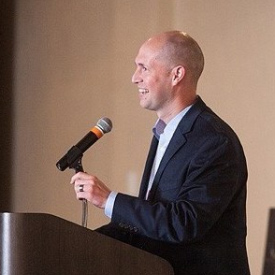Blogging through Hell – Part II
Stars & Resurrection
“This fell at the first widening of the dawn
as the sun was climbing Aries with those stars
that rode with him to light the new creation.” (Canto I.37-39)
We know so little of stars now. Drowned by the wrong kinds of light, we seldom glimpse them, let alone enjoy them. When Eustace Clarence Scrubb meets Ramandu, a “retired star”, in The Voyage of the Dawn Treader, he can only reply that, in the human world stars are simply balls of gas. “Even in your world, that is only what a star is made of, and not what it is,” Ramandu answers.
We have become a culture of Scrubbs.
Not sharing our clouded view of the heavens, Dante tells time and meaning through them, indicating that his journey begins on Good Friday and will continue through Easter Sunday. Aries was believed to be the sun at the time of Creation, becoming a kind of sign of Creation (dawn or rebirth). Are there echoes here of the Creed? Is Dante alluding to his journey in Christ, descending into hell to rise again the third day?
Virgil cannot lead him all the way to the resurrection or to its resting place on Mount Joy, having been born “sub Julio, and bred in Rome under Augustus in the noon of the false and lying gods” (Canto I.69-71). Dante honors Virgil as the “Glory and light of poets!” but acknowledges his lost state. Virgil is later numbered among the virtuous pagans, “a soul among the souls of Limbo” (Canto II.51-52).
Here we find a lesson in honoring the pagans, acknowledging their brilliance and limits simultaneously, descending neither to blind veneration or trite rejection. Virgil, in particular, has been subject to a strange charge of “propaganda”, the idea being that The Aeneid was only produced as a flattery piece for Augustus. The charge of propaganda would likely be taken as quite odd by Virgil, believing that the things he wrote were, well, worth propagating. But, I digress.
Circles & Descent
“Thy words have moved my heart to its first purpose.
My Guide! My Lord! My Master! Now lead on:
one will shall serve the two of us in this.” (Canto II.133-135)
The geography of The Inferno carries heavy significance, in both the stars encountered at the journey’s beginning and the “circles” spiraling through hell itself. Each circle groups together similar sinners with a punishment intended to meet the crime. The structure of Hell forms a kind of “V”, or an inverted cone, with each circle growing smaller and more constricting as it spirals downward.
The movement of the condemned becomes more and more restricted, finally reaching Satan at the very bottom of Hell. Frozen in ice, he can but pointlessly flap his wings. The motion simply stirs more freezing air, thickening the ice. He is surrounded by the treacherous, the worst of all sinners – those who had betrayed those to whom they should have been the most loyal.
The mouths on Satan’s three faces (a kind of anti-Trinity) continually chew Judas, Brutus, and Cassius. He cannot move, and he cannot speak; simply frozen at the very bottom of hell – a fit punishment for the one so determined to “ascend.”
The claustrophobic structure of hell also pictures the truth that, the more enslaved we become to these horrible sins, the more we lose our humanity and freedom. We become shackled, the opposite of the idea that sin and rebellion bring freedom.
Before Virgil and Dante enter the first circle of hell, they must first pass through a kind of entry way or vestibule – not technically a “circle” of Hell, the vestibule remains a place of punishment for those who refused to take sides. These “opportunists” were perfectly willing to change sides, or refuse to choose sides, when it mattered most, and they are gruesomely punished for it…
“At once I understood for certain: these
were of that retrograde and faithless crew
hateful to God and to His enemies.
These wretches never born and never dead
ran naked in a swarm of wasps and hornets
that goaded them the more they fled,
and made their faces stream with bloody gouts
of pus and tears that dribbled to their feet
to be swallowed there by loathsome worms and maggots.” (Canto III.58-66)
Understandably, the horrid sight causes Dante to collapse.

Brian Phillips
Dr. Brian Phillips serves as a pastor in Concord, NC, where he lives with his wife and their four children.










